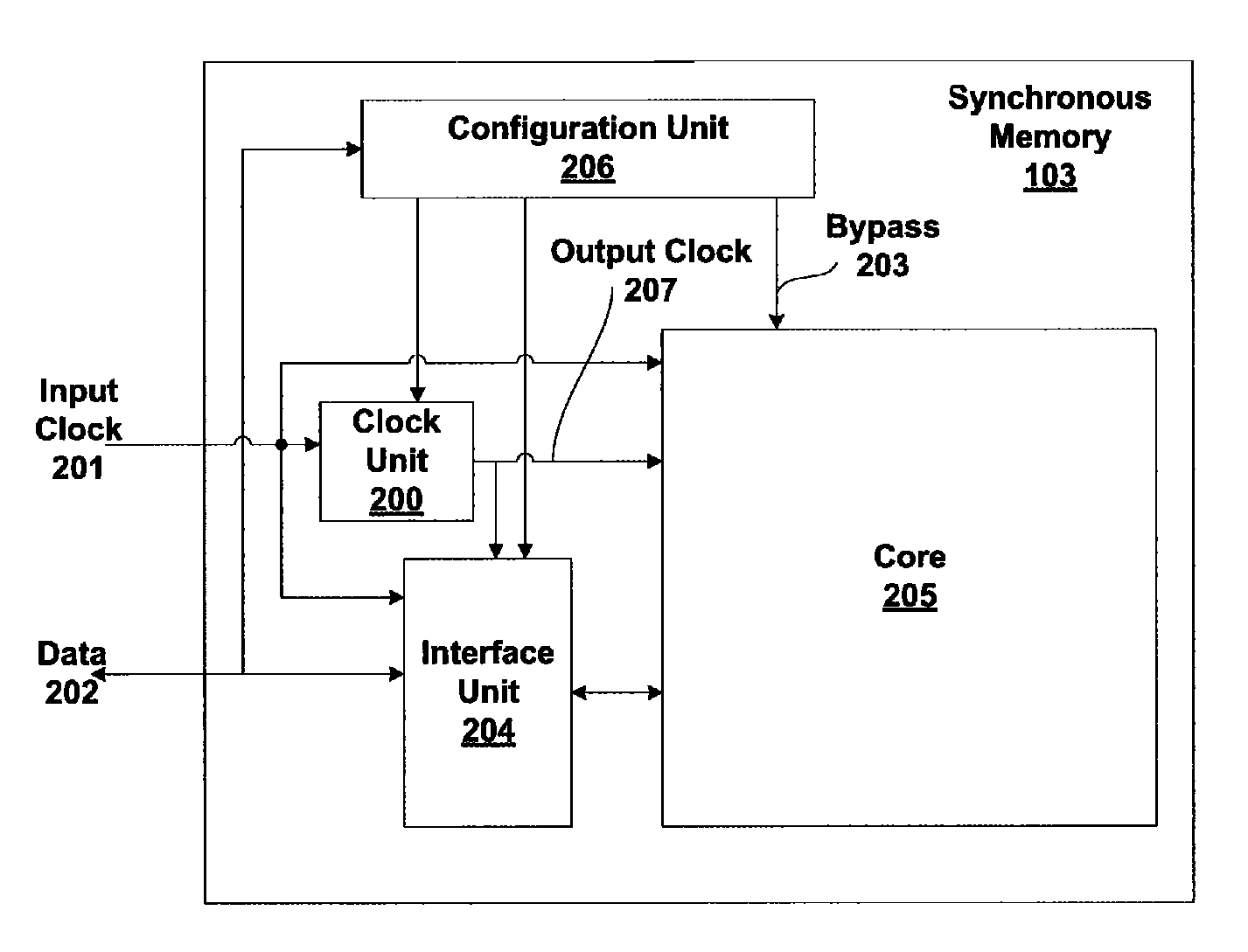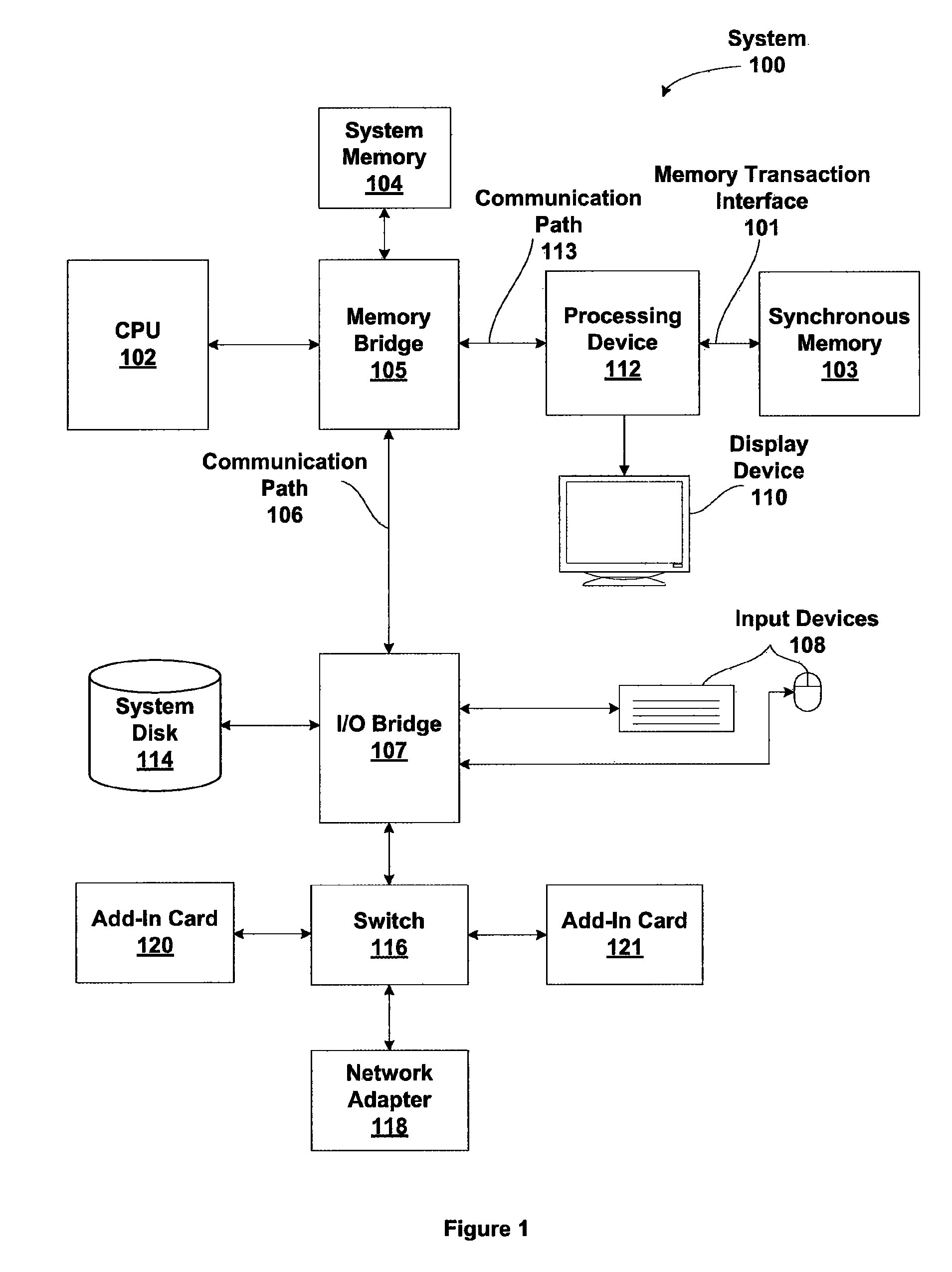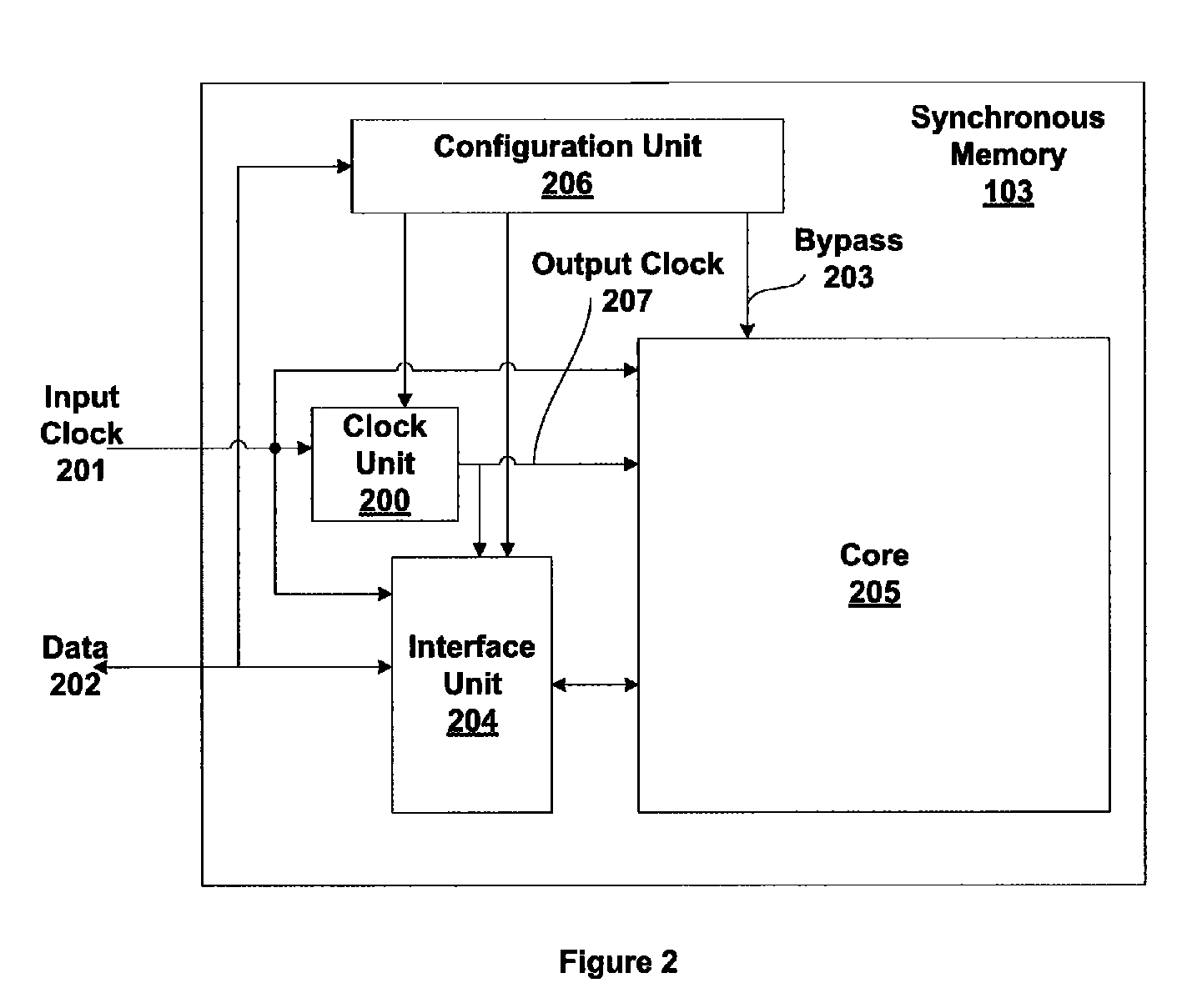Low latency synchronous memory performance switching using update control
a technology of update control and synchronous memory, applied in memory systems, sustainable buildings, instruments, etc., can solve problems such as high power consumption, and achieve the effects of reducing the power consumed by synchronous memory devices, increasing performance, and high speed modes
- Summary
- Abstract
- Description
- Claims
- Application Information
AI Technical Summary
Benefits of technology
Problems solved by technology
Method used
Image
Examples
Embodiment Construction
[0025]In the following description, numerous specific details are set forth to provide a more thorough understanding of the present invention. However, it will be apparent to one of skill in the art that the present invention may be practiced without one or more of these specific details. In other instances, well-known features have not been described in order to avoid obscuring the present invention.
[0026]A synchronous memory device is configured to switch into and out of different speed modes depending on the memory bandwidth that is needed by a processing device that is coupled to the synchronous memory device. A variety of different data transaction rates may be specified by the different speed modes to provide several different performance levels. A DLL or PLL that produces an internal clock is locked to a full speed clock frequency and an output of the PLL or DLL remains substantially locked when a different speed (other than full speed) is used. Because the PLL or DLL does no...
PUM
 Login to View More
Login to View More Abstract
Description
Claims
Application Information
 Login to View More
Login to View More - R&D
- Intellectual Property
- Life Sciences
- Materials
- Tech Scout
- Unparalleled Data Quality
- Higher Quality Content
- 60% Fewer Hallucinations
Browse by: Latest US Patents, China's latest patents, Technical Efficacy Thesaurus, Application Domain, Technology Topic, Popular Technical Reports.
© 2025 PatSnap. All rights reserved.Legal|Privacy policy|Modern Slavery Act Transparency Statement|Sitemap|About US| Contact US: help@patsnap.com



